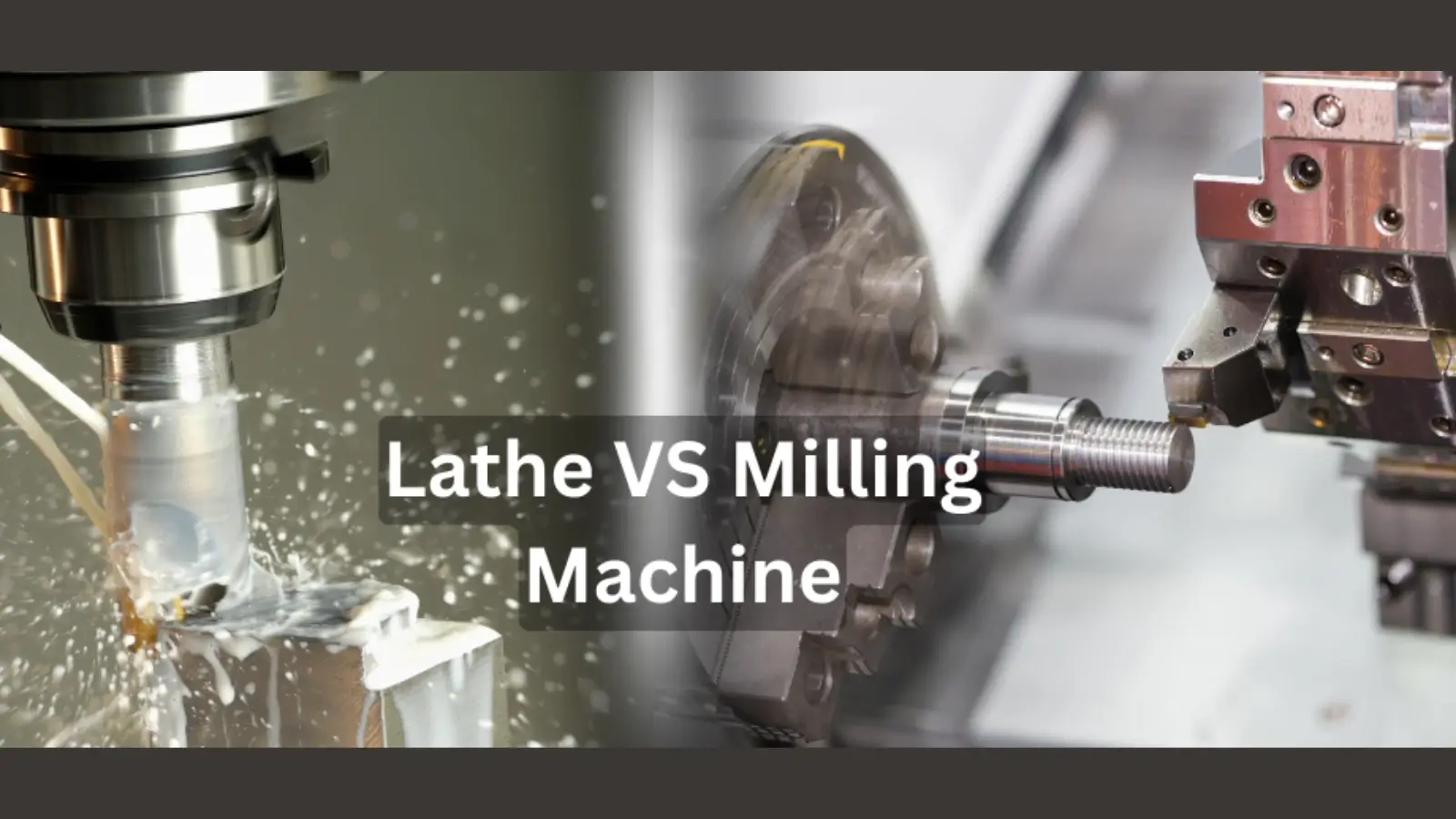


In precision machining, lathes and milling machines are two foundational machines for removing material to produce parts and components. A lathe has the primary function of turning operations by rotating the workpiece against a stationary cutting tool, which produces symmetrical, cylindrical components. A milling machine, on the other hand, uses a rotating cutter that advances into a stationary workpiece held in a fixture, and this movement of the tool enables features like slots and complex geometries.
The essential difference is between workpiece rotation for lathes and tool rotation for milling machines. Lathes are preferred for producing axial features like threads and tapers, while milling machines are preferred for features that require multi-dimensional cutting. Most CNC milling services have the capability of turning operations using lathes, as both are essential in part production.
Lathes typically have a horizontal, elongated bed that is particularly useful for long workpieces, while milling machines have a vertical or horizontal spindle with a compact bed. Understanding the difference between lathe and milling is essential to choosing the appropriate machine.
A lathe machine works by rotating the workpiece at high speeds against a fixed cutting tool, which removes material at a uniform rate and produces cuts symmetrically around the workpiece’s axis.
Lathe components include a headstock that holds the spindle and a drive mechanism that rotates the workpiece at controlled speeds. The tailstock supports the opposite end of the workpiece through a center chuck, and the bed provides a stable base for alignment of the workpiece with the carriage.
Lathe machines perform turning operations where the workpiece is secured in the chuck and rotated at speeds from 50 to 10,000 RPM, which largely depends on the type of material and its hardness properties. The rotational speeds also depend on the part diameter, as larger parts and higher RPMs can lead to unstable rotations and vibrations. The cutting tool in a lathe moves parallel to the axis for straight turning or at an angle for tapering.
Lathe machines can be manually operated or through CNC programming. The depth of cut for lathes is typically around 0.5 - 5 mm per pass to achieve surface finishes from 1.6 to 6.3 Ra. Lathes are also capable of drilling, boring, and threading.
For CNC lathes, the servo drives the axes, enabling precision via G-code instructions. Coolants, which are often fluid, are used to reduce heat buildup, preserving tool life and dimensional accuracy within tolerances of +/- 0.01 mm.
A milling machine functions by using a rotating cutting tool with multiple teeth on a spindle and feeding it against a workpiece fixed on the table. The material is removed from the workpiece in chips through a literal cutting or shearing force.
Key components of a milling machine include the column and knee for vertical adjustment, the saddle and table for multi-axis positioning, a nd the tool holder to secure the small cutting tool. Milling machines come in different types, like vertical mills, horizontal mills, universal milling machines, gantry mills, and more.
The milling operation begins with fixing the workpiece on the table using vises and clamps to ensure rigidity to withstand cutting forces up to 5000 N. The spindle and cutter rotate at 500 to 5000 RPM with feed rates of 50 to 500 mm/min. Both of these numbers depend on the material, cutter, and depth of cut.
CNC milling uses linear and rotary axes for simultaneous multi-axis machining with up to 7 operable machining axes. CNC milling machines also feature dynamic spindle load monitoring to reduce tool wear and adjust according to material hardness. Like lathes, they also produce chips and are removed via coolant.
CNC milling machines and CNC lathe machines work with inherently different tools because their machining processes use inverse movement. Lathes have stationary tools against rotating workpieces, while mills rotate their tools against stationary workpieces. In CNC lathes, turning uses carbide inserts clamped in holders for high-speed operations up to 2000 sfm at the surface.
The tools have negative rake angles for uninterrupted cutting and internal boring bars for hole enlargement. Most lathes can support diameters from 5 mm to 150 mm, and some can even go up to 300 mm.
CNC milling tools use rotating cutters like end mills with helical flutes (30° to 45°) for efficient chip evacuation. The face mills have serrated inserts for broad area planar cuts. Shank diameter ranges from 3 to 25 mm, and often these tools are coated with TiAlN to enhance wear resistance.
Lathe tools prioritize rigidity and edge strength for continuous cutting, while milling tools focus on flute count for balanced material removal and finish.
Lathes excel in fabricating rotationally symmetric components through turning operations using workpiece rotation for efficient material removal along axial paths.
Shafts and Axles: Cylindrical shafts for automotive transmission with custom diameters and lengths.
Bushings and Bearings: precisely machined bearings with internal diameters honed to IT tolerances for low friction.
Threaded Rods and Fittings: custom components with unified or metric threads at pitches from 0.5 to 10 mm, used in hydraulic and pneumatic systems.
Milling machines produce planar and contoured features using multi-axis tool movement for versatile geometry.
Gears and Splines: Involute gear profiles with module sizes of 0.5 to 10
Brackets and Housings: Aerospace or automotive enclosures with milled pockets, chamfers, and wall thicknesses down to 1 mm
Molds: Die surfaces finished to 0.4 Ra for injection molding
You can select a lathe machine if the part production is dominated by cylindrical and conical features, such as shafts or rollers, where rotational symmetry allows single-setup operations. Choose mills for parts like brackets or housings requiring multi-directional profiles.
Use lathes when the materials are ductile, like aluminum and brass, as they can accommodate deeper cuts up to 10 mm without chatter. Brittle alloys are better to machine using mills as the feed is easier to control and the tool can be maneuvered better.
Lathes are great at handling uniform parts for high-volume series with bar feeders that can reduce cycle times in lathe vs milling machine.
Lathe tooling is cheaper than milling tools with interchangeable inserts. Milling sometimes requires inserts, tool holders, and special spindles to utilize certain cuts.
Milling and lathing machines are both integral for machining and part production. Lathes are optimized for symmetrical round parts, and milling is better suited for intricate features and profiles. Modern milling machines have the capability to produce many types of geometries, even round and conical geometries, using five-axis and multi-axis milling.